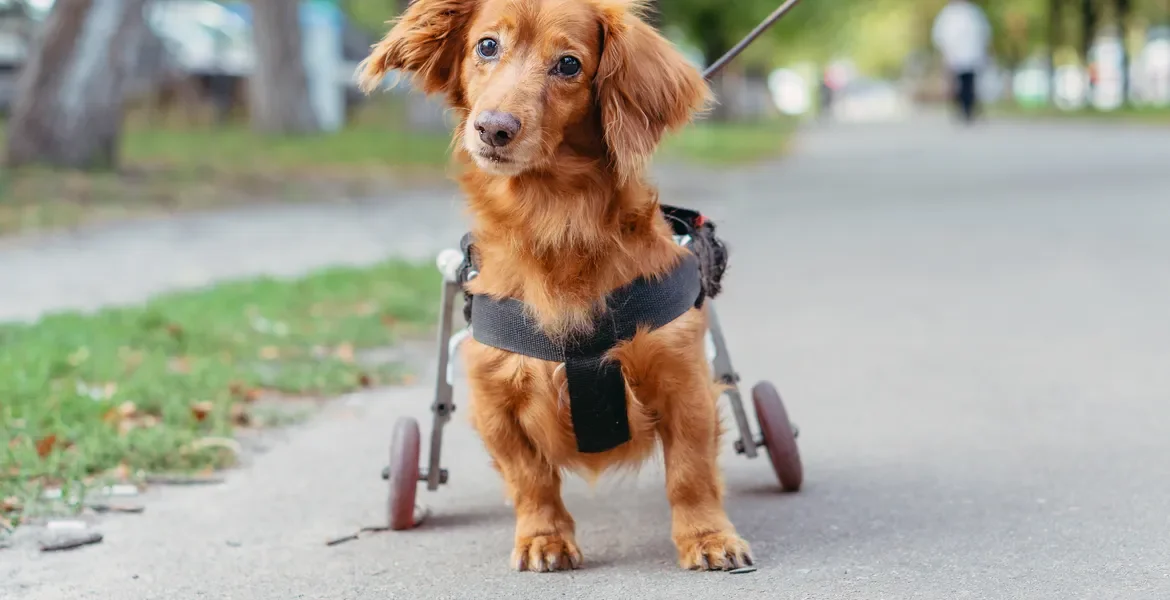9 Ways You Can Support Disabled Animals
Ableism doesn’t just impact people. It also affects how we view both wildlife and our animal companions.
Far too often, ableism—a cultural bias that devalues bodies deviating from normative standards—has negatively impacted not only humans, but also animals. Historically, veterinary clinics were designed without ramps or wide exam tables; pet-training programs favored only “ideal” body types; and adaptive equipment for injured animals was prohibitively expensive or simply unavailable. As a result, creatures with physical disabilities or chronic conditions were marginalized—or worse, euthanized out of biased concerns about what was considered a “good quality of life.”
Breaking Down Ableist Barriers for Animals
In her book Beasts of Burden: Animal and Disability Liberation, Sunaura Taylor explains ableism and explores how it applies not only to disabled humans but also nonhuman animals, reinforcing speciesist hierarchies and justifying exploitation. Taylor suggests we overcome our impulse to “fix” or discard disabled bodies and instead accommodate for them.
Applying this to the care of cats and dogs whom we keep as our companions, some creative ways to dismantle ableist barriers have begun to appear. For example, plentiful tripedal (sometimes colloquially referred to as “tripod”) and bipedal pets thrive. Custom wheelchair harnesses and 3D‑printed prosthetics are tailored to individual needs and offered at a fraction of past costs. Mobile, in‑home, and telehealth/telemedicine services can bring care directly to pets who struggle with transport challenges. These advances are not only improving access and quality of life for disabled pets but are also moving us humans toward more equitable models of animal care.
Animal Agriculture and Its Contribution to Animal Disability
Taylor emphatically believes we need to go further than addressing these issues with pets. In her book, she shows that industrial animal farming deliberately induces and exploits “nonideal” animal bodies. For example, many farming practices use confinement that cripples animal limbs. Or they may use selective breeding that produces exaggerated traits (like chickens with oversized breasts, which cause leg disorders, lameness, and an inability to perform simple behaviors like walking, perching, or even standing comfortably. Normalizing these practices in animal agriculture leads to suffering being normalized. By interweaving disability rights and animal rights, Taylor’s work asks us to become involved in a shared liberation movement that challenges the ideology of able‑bodiedness not just for humans but also for cats, dogs, chickens, pigs, cows, and other types of animals we come in contact with.
9 Ways to Support Disabled Animals
As spiritually-minded people interested in reducing suffering and promoting compassion, can we help envision more inclusive ethics that value all lives equally? I think we not only can, but must as part of our commitment to the inter-beingness we value. Here are some of my favorite ideas for getting involved:
Visit The Disabled Pets Project to learn about alternatives to euthanasia to help your injured or chronically ill animal companion thrive.
Check out these 13 children’s picture books with disabled animal characters curated by the Institute for Humane Education.
Support injured and suffering animals with pet prosthetics and creative orthocare.
Help an elderly, disabled, or injured pet walk again with a donation to the Handicapped Pets Foundation.
Learn about better lives for chickens from Bree the Rescue Rooster.
Take a closer look at how your eating choices can affect the world’s wildlife.
Understand what speciesism is and how it impacts animal lives.
Use this guide for choosing language that avoids implied violence or ableism against animals.
Read Beasts of Burden: Animal and Disability Liberation by Sunaura Taylor.

